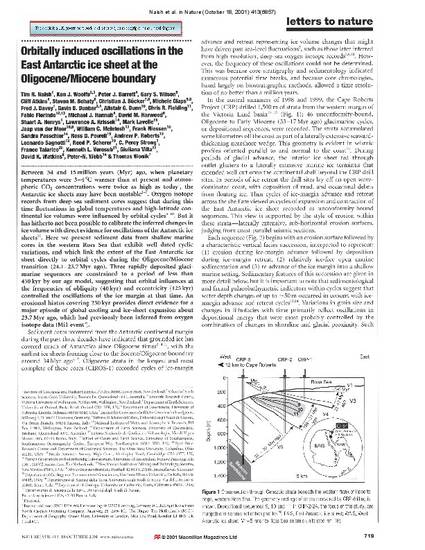
Between 34 and 15 million years (Myr) ago, when planetary temperatures were 3-4°C warmer than at present and atmospheric CO2 concentrations were twice as high as today, the Antarctic ice sheets may have been unstable. Oxygen isotope records from deep-sea sediment cores suggest that during this time fluctuations in global temperatures and high-latitude continental ice volumes were influenced by orbital cycles. But it has hitherto not been possible to calibrate the inferred changes in ice volume with direct evidence for oscillations of the Antarctic ice sheets. Here we present sediment data from shallow marine cores in the western Ross Sea that exhibit well dated cyclic variations, and which link the extent of the East Antarctic ice sheet directly to orbital cycles during the Oligocene/Miocene transition (24.1-23.7 Myr ago). Three rapidly deposited glaci-marine sequences are constrained to a period of less than 450 kyr by our age model, suggesting that orbital influences at the frequencies of obliquity (40 kyr) and eccentricity (125 kyr) controlled the oscillations of the ice margin at that time. An erosional hiatus covering 250 kyr provides direct evidence for a major episode of global cooling and ice-sheet expansion about 23.7 Myr ago, which had previously been inferred from oxygen isotope data (Mi1 event).
Available at: http://works.bepress.com/sandra-passchier/3/

Published in Nature (October 18, 2001) 423: 719-723. http://www.nature.com/nature/journal/v413/n6857/abs/413719a0.html